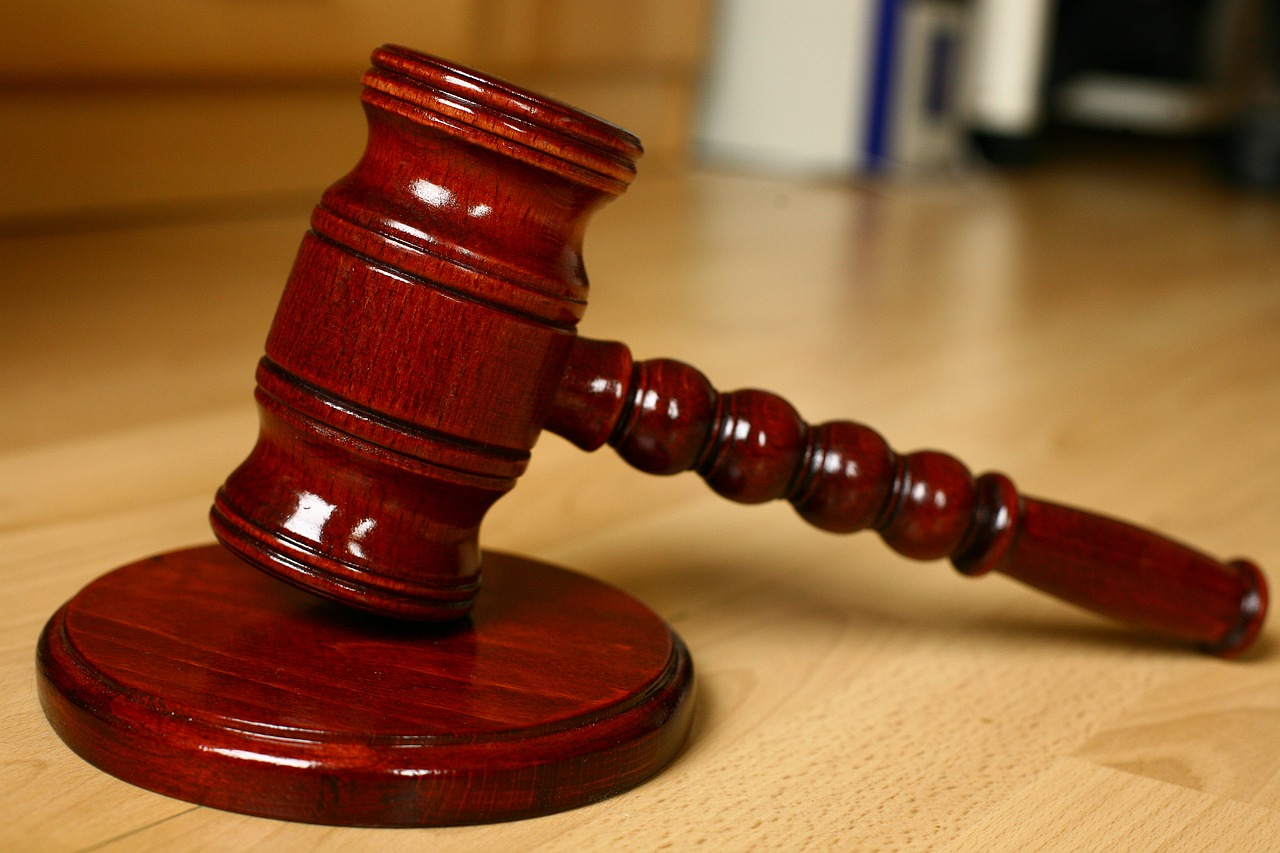What is a Heggstad Petition?
A Heggstad Petition may not be something you have heard about, but it can be an important part of the probate process. If you have recently lost a loved one and are dealing with their estate, the Heggstad petition may help you in distributing property to the rightful heirs.
What is Probate?

Probate is a legal process where a person’s assets are distributed among their heirs after their death. This includes real and personal property. The process is overseen by a local court, usually the county court or sometimes, specifically the probate court.
It can take months or even years for the probate process to be completed and the property distributed from the decedent’s estate. The job of the court is to ensure that the wishes of the deceased person as stated in their will are carried out and that California probate code is followed.
How Does Probate Begin?
To begin probate, or have it opened as is commonly referred to, an interested person will need to file a petition to open probate along with a copy of the death certificate and the will. The will shows what the decedent intended to happen to their property. These forms will be presented to the court. A hearing will be set to formally open probate and an executor or personal representative will be appointed. Usually, someone is named in the will to act as executor.
If there is no will or the person can’t or doesn’t want to act as executor, the court will appoint someone else based on probate law. They will be given letters testamentary, which are documents that give the executor authority to act on behalf of the estate.
What Happens in Probate?
Once the executor is appointed, they have several responsibilities, known as their fiduciary duty, to the estate. They must meet any deadlines imposed by state law or the court and act in the best interest of the estate.
One of the first tasks of the executor is to secure the assets of the estate. They may need to locate certain property or make sure everything is safe and taken care of. For instance, they might need to appoint someone to be in charge of a business that the decedent owned. The executor will need to take inventory of all the property, which includes getting appraisals for certain types of estate assets, such as real property.
Paying Debts
Before any of the property can be distributed to the heirs, the executor must pay all debts owed. They will need to publish a notice in the local newspaper for a period of time as required by state law. Some states require them to also send letters to known creditors. The creditors will have a deadline for when they must present any claims against the estate. The timeline is usually a few months, during which the executor will pay all legitimate bills.
The executor must also file federal and state tax returns and pay any federal taxes and state taxes owed as well as any estate taxes. They will pay funeral costs and other expenses for the estate.
If there aren’t enough liquid assets, the executor may need to sell other property to pay the debts. This can include a family home, vehicles, stocks and bonds, and personal belongings.
Distributing Assets

Once all debts have been paid, the executor will be tasked with dispersing any remaining property to the heirs. In most cases, they will sell non-liquid assets to divide up the estate funds to the heirs. If the decedent stipulated an heir to receive a specific item, the executor would transfer ownership, such as a grandparent giving their grandchild a vehicle or a parent leaving the family home to a child.
After individual assets have been transferred, the remaining property is divided as stated in the will to the heirs. The executor would provide an accounting to the court of all income received to the estate and any payments paid out. The court would review the statement and approve the closing of probate.
Avoiding Probate with a Trust
As you can see, probate is a lengthy and complicated process that can become even longer with delays. Many people want to avoid this process and set up a revocable trust. They can have all assets formally transferred into the living trust while they are still living, including real and personal property. Once they have passed away, the assets attached to the trust go to the person named as beneficiary.
What is a Revocable Living Trust?
A revocable trust is considered a separate and living entity, which doesn’t dissolve when the trustee dies. It is an important tool in estate planning to protect the deceased person’s estate. The trustee is the person who set up the trust and the one who was the owner of the estate before it was transferred to the trust. Even if some assets aren’t included in the trust, full probate won’t be necesary, only what is required to distribute those assets outside of the trust.
When Probate isn’t Necessary
Probate isn’t necessary with a revocable trust, and everything transfers automatically, which can alleviate a lot of concern for the family. Certain property can bypass probate anyway, such as life insurance or retirement accounts, if they have a named beneficiary that isn’t the estate. In this case, the property is transferred automatically with no need to go through probate.
Other examples of this situation include a vehicle that has someone named as transfer on death, otherwise known as TOD. Bank accounts often have someone listed as payable on death or POD. They don’t need to be included in probate if this is the case.
While certain property can be kept out of probate because of being tied to a beneficiary, other assets don’t have this option. In this situation, a trust is the best way to protect that property and ensure they go to the intended heirs.
In some states, real property cannot be allocated to a beneficiary unless it is in a will or trust. Other states allow what is known a a quit claim deed, which allows the owner of the property to transfer it to someone else upon their death. Most states don’t allow for this option, which is why a trust is important.
What Happens with Property Not in a Trust?
When a trust is set up, the trustee usually puts all their property in the trust. This protects the estate from going through probate and allows the intended heirs to receive their inheritance sooner. It also includes a schedule of assets to know what is included as trust property.
Many times, the trustee or the person who set up the trust buys new property. If these assets aren’t put into the trust, they will still need to go through the probate process. For some reason, the trustee may want to keep the property separate.
In other cases, the trustee may have meant to put the property in a trust but didn’t have time. Or perhaps they forgot to complete the process. Fortunately, the Heggstad Petition exists to protect the heirs from being required to go through probate to access this particular asset.
What is the Heggstad Petition?
The Heggstad Petition comes from a court ruling in California in 1993 from the Estate of Heggstad. The original ruling of the Heggstad case was included into the California probate code 850 to ensure the rightful beneficiary receives their intended inheritance. As part of California law, the Heggstad petition seeks to get a court judgment that the property which was still in the decedent’s name was really owned by the trust because of the intention of the trustee to transfer it to the trust.
For a successful Heggstad Petition process, you will likely need to show the particular asset listed on a schedule of assets to verify the decedent’s intent. If the court approves the petition, it will issue a court order to transfer assets to the trust. It’s important to keep the property schedule up to date to make it easier for the Heggstad petition to be approved for any property in question.
Filing a Heggstad Petition

To file Heggstad Petitions, you will need to prove that the trustee meant to transfer the property to the trust. You must provide proof of the decedent’s intent when filing a Heggstad petition. These other forms includes the following:
- A description of the property not transferred
- A copy of the trust document
- Information about the deceased person and their heirs or beneficiaries
- Documents to support the claim
- How the situation should be remedied
Most often the situation occurs because of an emergency or hospitalization of the trustee. Sometimes there may be an error with the documentation on the property. The situation isn’t usually discovered until after the trustee has passed away and the beneficiaries or executor are looking at the trust property.
Heggstad Petitions should be filed as soon as the omission is recognized. You may choose to consult with an estate attorney who can help you file the Heggstad Petition and provide the correct documentation. While filing Heggstad Petitions is a fairly straightforward process, each probate case is unique and a probate attorney can help you receive a successful judgment for the property involved. You can consult a probate lawyer for a free consultation to ensure a successful Heggstad petition.
Court Ruling

With the Heggstad petition filed, the court will review the information before making a decision. The judicial proceeding may look at the decedent’s estate to determine their written intent. If the court ruled in favor of the Heggstad petition, the court order declaring that the property is part of the trust is issued.
How Property Can Fail to be Transferred to a Trust
If you don’t understand how trusts work, you may wonder how a person can fail to transfer property to the trust. Funding a trust requires multiple steps, which takes time. If one of these steps are delayed or not handled correctly, it could result in the asset not being included in the trust.
For example, you may want to transfer real property into a trust. Before you can have any property properly transferred, you need to amend the property title from the deed to show that the trust is the owner rather than an individual. If the owner dies before the process is completed, you could file the Heggstad petition with the probate court to show that it was the intention of the decedent to include the property in the trust.
Other examples include:
- The trustee became seriously ill in the middle of the creation of the trust and couldn’t complete the final steps before they died.
- Paperwork had mistakes which prevented the trust from being funded.
- The owner of the asset didn’t know they needed to transfer the title of the property to the name of the trust.
Why You Would Want to Use the Heggstad Petition to Avoid Probate
Numerous tools exist for dispersing the property of an estate after someone dies. The person’s will is the most common and indicates their intentions for any property. However, the will must be proven in court and its instructions followed, which is overseen by the court. For a large and complex estate, this process can take months or even years.
If the decedent had multiple heirs and beneficiaries, the process can be even more drawn out. For families who are depending on the funds from the estate to survive, this process can be expensive and life-altering. For example, the surviving spouse may be raising young children and need funds to support the family.
If there are any delays, such as someone contesting the will or the executor denying claims made against the estate, the process can be lengthened significantly. The probate court must decide on all these situations before you can move forward with the process.
A trust prevents these issues, and the trust assets go to the beneficiaries much quicker. If an asset isn’t included in the trust, it can take some time for it to be distributed. Since the Heggstad Petition can allow the asset to be placed in the trust, it can help reduce the timeline until everything is completed after a person’s death.
To learn more about the Heggstad Petition and California probate code 850, you can seek legal advice from an experienced probate attorney with a free consultation. They can assist you in understanding California law, filing the Heggstad Petition for an asset and manage other aspects of the trust.

